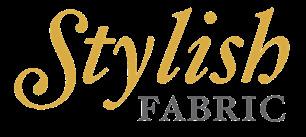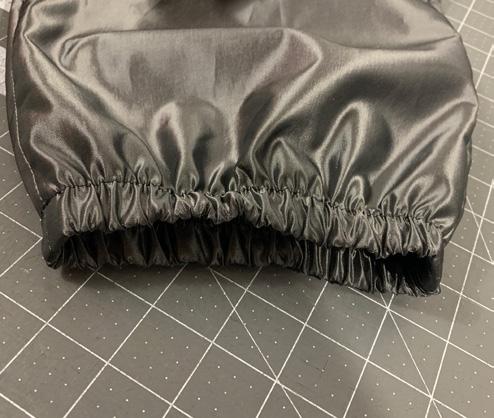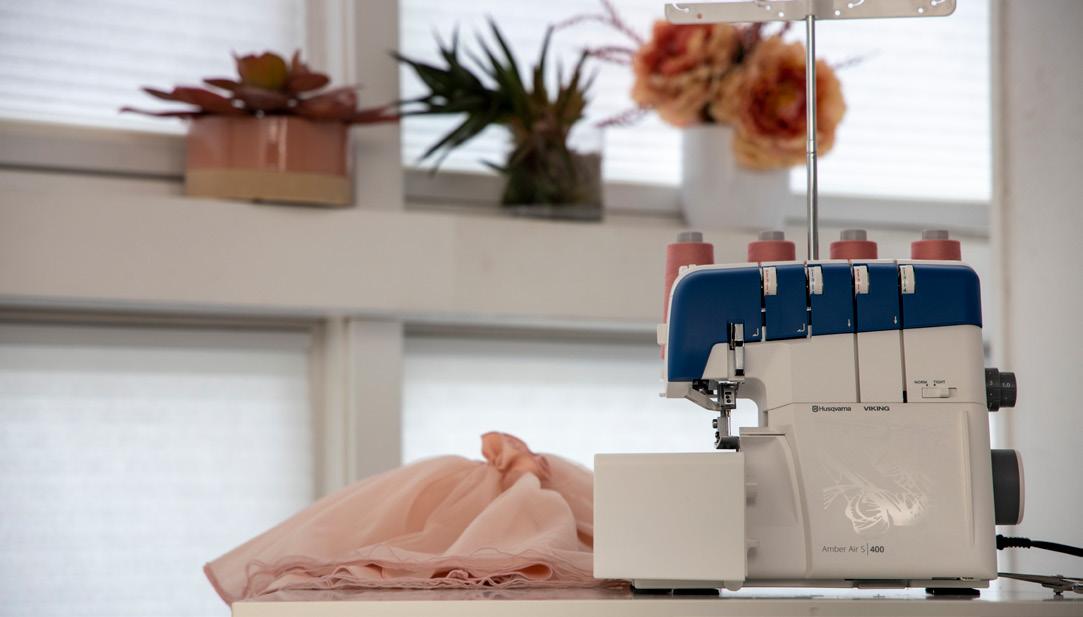
5 minute read
A LETTER FROM THE EDITOR
Fashion Meets Function Fabric When you’re sewing something that is meant to stretch and move with you comfortably, you naturally reach for stretch fabric. But not all stretch fabric is made equally. For athleisure, you also need to keep in mind function in terms of durability, performance and stretch-ability. Luckily there are many fabrics out there that embody all of these characteristics... and are very fashionable.
Palette For a capsule wardrobe, you may want to take into consideration a color story or theme – we love using basics like black and white, but with colorful accent pieces with sheen! If you are consistent in the fabric and color/print choices, these garments can all work together so when you are heading out the door to the gym or errands, just grabbing two pieces will result in a matched outfit.
Advertisement
FABRIC CONSIDERATIONS FRENCH TERRY: This soft and luxurious knit fabric features a smooth and soft face with stretch across the grain for added comfort or ease. With a soft face and looped back, French terry fabric is perfect for sportswear and casual apparel as it is both absorbent and lightweight. (Used for the Sherwood Top and Olympia Skirt.)
RIBBING: This fabric either comes in tubular form or as yardage and is perfect for finishing hems, necklines and edges of both knit and woven fabrics. Ribbing has a stable stretch that doesn’t ripple when sewn in stretched. It can also be used as an accent or pop of contrast in garments. (Used in the Carlton Cropped Hoodie, Woodbine Joggers, and Leaside Sweater Dress.)
SPANDEX: Not your typical ’80s workout fabric, spandex actually refers to the elastic fiber knit or woven into a fabric that makes it stretch. Modern spandex-blend fabrics bring today’s knit garment patterns to their full potential. Spandex’s most significant characteristic is its ability to stretch up to 500 times its length and continually recover to its original shape, making it ideal for athletic apparel. Spandex cannot stand alone and must be blended with other fibers. Host fibers such as cotton, rayon, wool or bamboo allow the spandex fiber to create stable, resilient, versatile fabrics with excellent shape retention. (Used for the silver Woodbine Joggers and Sherwood Top tank version.)
JERSEY: This thin, lightweight and stretchy fabric has a great drape. Jersey has a very smooth, flowing fit and comfy feel ideal for looser fitting garments. Spandex can also be added to jersey fabric, increasing its stretchiness. (Used for the Bennett Tank.)
TAFFETA: Sometimes you have to go unconventional. Sporty silhouettes in fashion fabrics can be a winning combination for style – and the iridescence and durability of taffeta, paired with knit ribbing, is perfect in our Woodbine Joggers. (Used for the Woodbine Joggers.)
SWEATSHIRT FLEECE: This knit fabric features a brushed back that creates a smooth knitted side and a cozy fleece side with a stretch across the grain. This fabric is the most popular choice for cozy sportswear pieces including hoodies, sweatshirts and tracksuits. (Used for the Carlton Cropped Hoodie and Leaside Sweater Dress.)

KNIT NOTES Knit fabrics don’t ravel, so the seam allowance for most knit garment patterns is narrower than for woven garment patterns. You can also adjust the seam allowance width to the exact width of your serging stitch.
Use a sewing machine needle suitable for knit fabrics, such as a stretch or ballpoint needle. Ballpoint needles have a slightly rounded tip that’s designed to slip between the tiny knit loops rather than pierce them, causing tears and snags. Choose a needle size that’s appropriate for the knit fabric weight and thickness.
Use all-purpose or polyester thread. These thread types are strong enough to withstand the fabric stretching without popping. There are also elastic/stretch threads out there that you can use for extra stability (and you don’t even need to use a special stitch on your machine)!
When cutting knit fabrics, use pattern weights rather than pins to secure the patterns and prevent shifting. To prevent stretching and distortion during cutting, make sure the cutting surface supports all of the fabric.
Use a rotary cutterto guarantee clean edges – and save time.
Use a compatible stitch on the machine or sergeraccording to the knit fabric type and the garment area, and teststitch or serge knit fabric scraps to determine the appropriate stitch and tension settings.
When sewing knit fabrics, don’t stretch the fabric as you stitch to prevent wavy or distorted seams.
Press knit seams using steam to help the fabric recover its shape and eliminate waviness after stitching.
If a knit garment requires interfacing, choose a knit variety that’s compatible with the fabric weight and hand.
ELASTIC FINISH Although there is already elasticity in knit fabric, edges often need extra stability. For waistbands, elastics from 1” to 3” wide can be inserted into a casing or serged right to the waistline edge acting as an agent to bring in the waistline, creating gathers and fitting – no closure required! Some elastics can even be decorative themselves and used as-is without a covering fabric. Just make sure the ends are stitched together well. Elastics that are 3/8”-1/2” wide can even be used to finish neckline and cut-out edges. Slightly stretch just the elastic as you sew, then flip to the wrong side of the garment and topstitch in place.

When working with your typical 20% Spandex/ Lycra 80% Nylon/Polyester blend stretch fabric with 4-way stretch, to sew a form-fitting workout apparel garment, make sure that your pattern is about 90% of your body measurement. This is called a 10% pattern reduction for “negative ease”. For more spandex sewing expertise, check out SEW & TELL Podcast Episode 17.

Sergers work very well for constructing knit garments, because the stitch is formed from multiple looped threads and includes stretch.
Sergers differ from conventional sewing machines because they have two sets of feed dogs positioned one in front of the other under the throatplate. This allows for a feature called “differential feed,” meaning that the two feed dog sets can be adjusted to feed the fabric through the machine at different speeds. Differential feed is very useful for serging smooth knit seams because the varying speeds help guide the fabric without stretching it or creating a wavy edge.
Test-serge the fabric to make sure all the tensions are balanced. They are balanced when the fabric and loops lay completely flat. If the serging stitch is causing the edge to curl or fold, or the loops are being “tightened” by the other side’s loops, meaning you need to adjust the looper tension settings. Make sure you also stretch your test-serged sample. If the needle tensions are off, it can still cause the seam to pop.

Tip: Once your serger is perfectly balanced for a standard knit fabric, take a picture of the tension settings so you know what numbers to adjust to next time.





